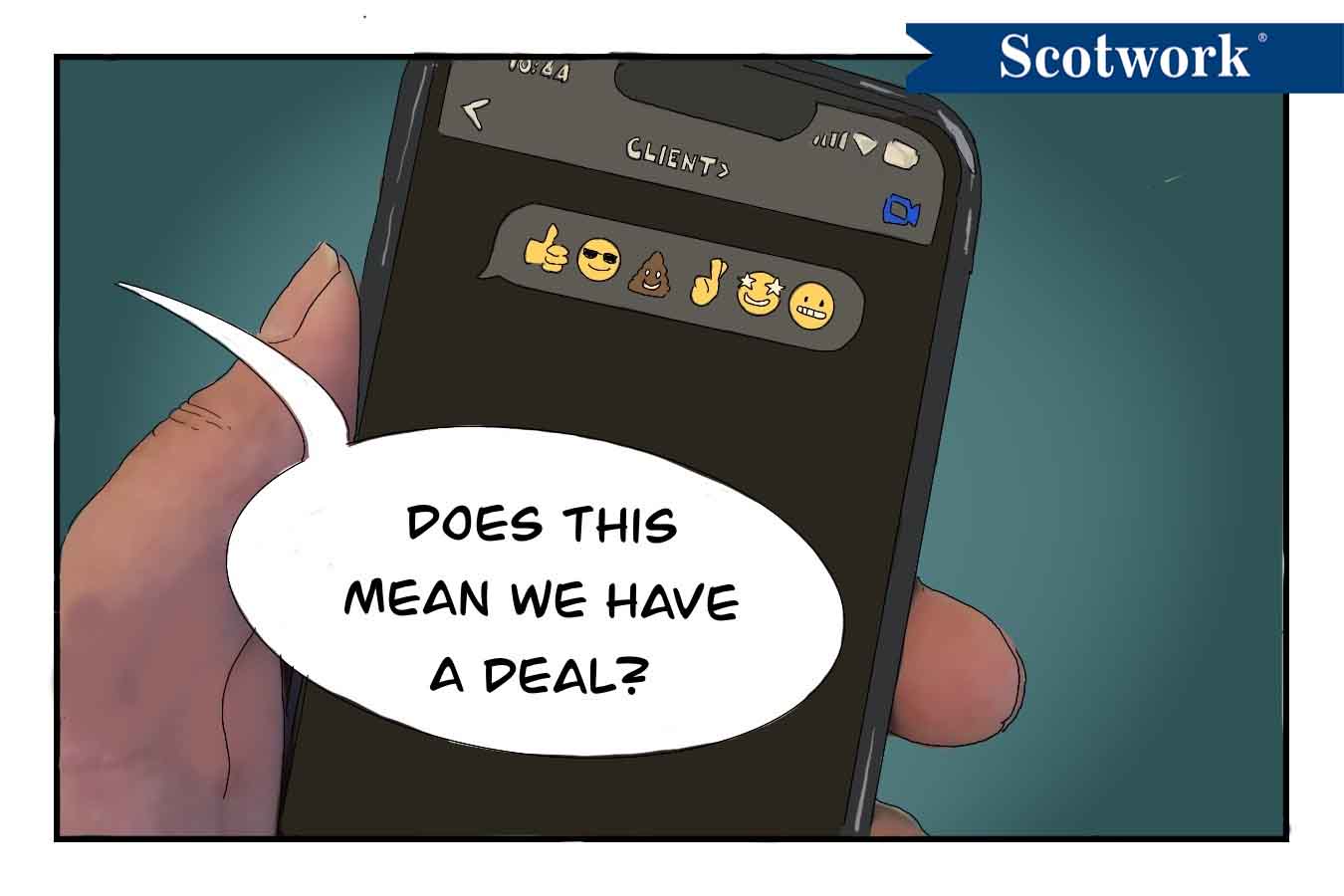Every day, our world becomes more digital than the day before. Emails outnumber in-person meetings, “ping me” has replaced face-to-face greetings, and AI-generated responses are starting to crowd out thoughtful human communication. As a result, negotiations are taking new twists and turns. Mastering how to read digital signals — the body language of an online world — can make or break a negotiation. These subtle cues, hidden in timing, tone, and formatting, can reveal intent, interest, or flexibility. By learning to interpret and deliberately send them, you help keep conversations human, even when they happen behind a screen.
Below are some digital signals that negotiators are paying more attention to. However, if you think you’ve come across a digital signal, it’s important to verify that you’re interpreting it correctly. Nothing’s worse than misinterpreting a typo or an internet outage as something more than what it is. Just remember, these signals will help you understand what someone is potentially feeling or thinking, and verifying them, just like in the real world, can help you avoid embarrassing (and costly) mistakes.
Response Time
A response that lands in seconds may suggest urgency, which is useful if a deadline is looming, but it can also translate as anxiety or even desperation if overused. On the other hand, when someone lets a message sit for a day or two, it could signal hesitation, disinterest, or competing priorities.
If someone replies quickly, check in on their needs and timeline as there might be a deadline you’re unaware of. If they’re slow to respond, don’t assume the worst. Instead, consider switching channels: move from email to text, or from chat to a quick phone call to re-engage them and clarify what’s going on.
Emoji, GIFs, and TLAs
Our digital language has evolved into a modern form of hieroglyphics: emoji, GIFs, and TLAs (three-letter acronyms…LOL). These tools can help express emotion or intent that isn’t obvious in plain text. A thumbs-up might signal agreement. A smiley face might show friendliness. But context matters: Don’t assume their meaning is universal.
In high-stakes negotiations, it’s best to use these tools only after you’ve established rapport. Think of them as punctuation, not a replacement for clear communication. Used sparingly and thoughtfully, they can humanize your digital presence while preserving the clarity and specificity your negotiation deserves.
Chat Rhythm
Real-time chat platforms create their own tempo and language. Seeing that someone is “typing…” creates anticipation, but if that ellipsis lingers too long, the other side may wonder if you’re hesitating or reconsidering.
Think of effective chat-based negotiation as a dance: make your move, give the other person space to respond, then follow up in kind. This rhythm prevents you from overwhelming the conversation or, on the flipside, leaving it to stall.
Video Presence
Video calls reduce us to two-dimensional rectangles, and interpreting visual cues can be more challenging than it is in person. Worse yet, the way you’re perceived may not match your intent. When speaking, maintain “eye contact” by looking into your camera, not just at the faces on your screen. Frame yourself cleanly, with minimal background distractions, so your expressions and gestures land clearly. Pace your speech, use your tone intentionally, and pause strategically to give your words weight.
When you’re observing others, look for cues in their focus and engagement. Are they taking notes or multitasking? Do they seem present or distracted? If you’re unsure, ask. Don’t assume silence means disengagement; sometimes it simply means they’re processing. Pull them into the conversation with questions so you’re negotiating with each other, not just talking at each other.
These digital signals will only become more common, and more nuanced, in our negotiations. You can use them to your advantage by paying attention to what you send and how you interpret what you receive. But it requires presence, awareness, and intention. By tuning in, you can build stronger connections and avoid unnecessary misunderstandings.
Remember, it’s not how many LOLs you send or receive, but how you leverage every digital signal to turn “maybe” into “we have a deal.”
Negotiation Training and Consulting Can Help You Master Digital Signals.
Mastering how to read digital signals — the body language of an online world — can make or break a negotiation. Rely on Scotwork’s 50 years of expertise to help you navigate digital twists and turns.

